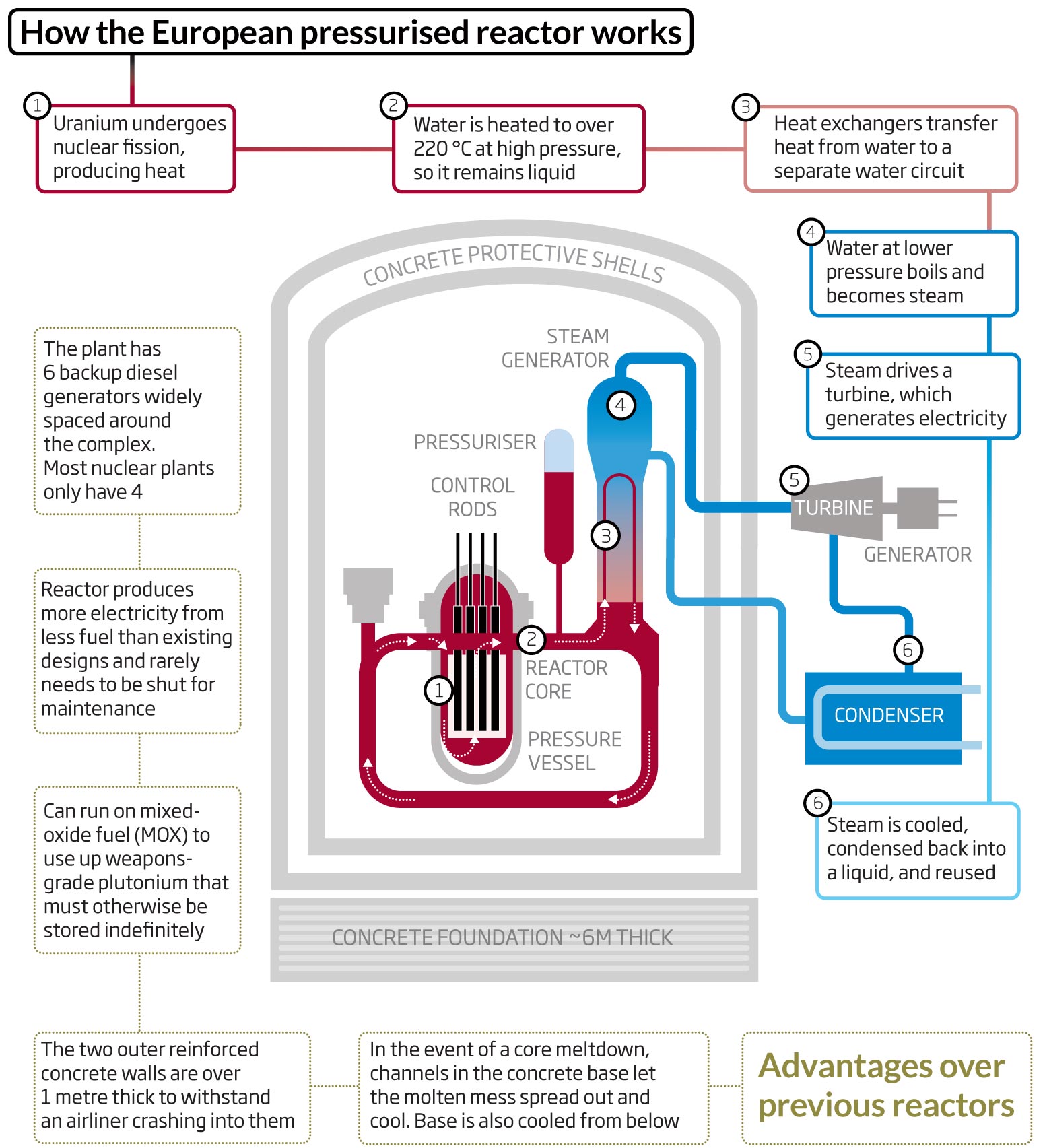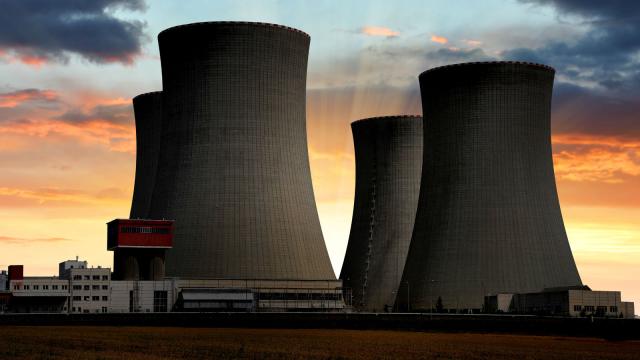The UK has set some very ambitious carbon reduction goals for itself — including the overall reduction of greenhouse gas emissions by a whopping 80 per cent by 2050, but this goal is proving more challenging than anticipated. At this rate, the UK will have to go fully-carbon free by 2030. So to meet its environmental deadline, they’re building the biggest, safest — and first — nuclear power plant on the British Isles in nearly 25 years.
The UK currently ploughs through some 2400 TWh annually, but by 2050 experts predict that number to fall to between 1400 and 1900 TWh thanks to improvements in energy efficiency. But given that wind, solar, wave and other alternative energy sources can’t even match current consumer demand, there’s no guarantee they’ll be able to do so 17 years from now either. But rather than sitting on its hands and hoping for the best, the British government is hedging its energy bets through nuclear power.
The Cameron government announced yesterday that it had inked a deal with a consortium of the Électricité de France (EDF), a French government-owned utility, and a pair of Chinese firms, to construct a pair of pressurised water reactors at the Hinkley Point C power station in Somerset to the tune of £26 billion. This 35-year sweetheart deal will pay £92.50 per megawatt hour — double current wholesale rates — to the group.
But the facility that these exorbitant prices are paying for is nothing less than state of the art. Known as the European Pressure Reactor (EPR), these are the third generation of pressurised water reactors built by the Areva NP company. These reactors are named so because they prevent the cooling water surrounding the core from boiling off by keeping it under intense pressure, despite reaching 220C. This hot water is then converted into steam, used to drive a turbine, then condensed and cycled back through to the core for reheating. New Scientist has created the following helpful graphic:

These will be the first nuclear power plants to be built after the Fukushima disaster and are the first built in the UK since 1995.
Both of the proposed reactors will produce 1650 MWe on either a mix of 5% enriched uranium oxide fuel, reprocessed uranium, or 100% mixed uranium plutonium oxide. Combined, they’ll output 7 per cent of the UK’s energy needs — enough for about 5 million homes.
To ensure that Hinkley Point C does not suffer Fukushima’s fate should a natural disaster strike, the EPR incorporates a number of fail safe systems. This includes four, count ’em four, emergency cooling loops that remain active up to three years after the plant has been shut down, powered by six separate diesel generators spaced around the facility in separate, waterproof buildings.
What’s more, two separate leak-tight containers surround the molten radioactive core re themselves enveloped by a pair of concrete walls 2.6 meters (~16 feet) thick — equally capable of withstanding airliner-class plane strikes and the massive internal pressures caused by a full meltdown. This entire apparatus is being built on a concrete floor six full meters (20 feet) thick, designed with deep channels to spread the molten core while a sub-surface cooling system freezes the spill from the ground up.
“It is unquestionably a safer system,” Timothy Abram of the University of Manchester told the Guardian. The EPR is also far more efficient than existing plants, consuming 17 per cent less uranium and requiring fewer and shorter maintenance sessions.
The UK only produces some 70 TWh from nuclear power currently, though Hinkley will add another 24 TWh. So even if Hinkley C goes online on schedule in 2023, it will barely put a dent in the UK’s 2050 emission goals — another 10 Hinkely-sized plants would be necessary to close the gap. And given nuclear power’s oft-vilified history, that isn’t very likely to happen. We’d better hope that other alternative power sources reach maturity, and fast. [Wikipedia – New Scientist – The Guardian]
Picture: Vaclav Volrab / Shutterstock
